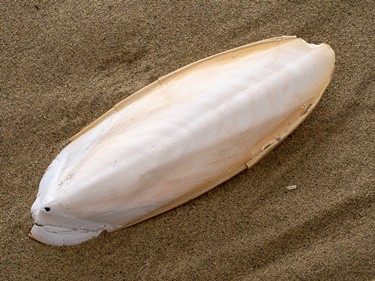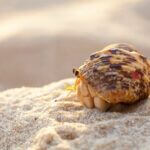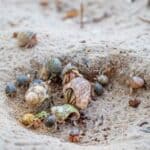Last Updated on October 7, 2023 by Joanne Harper
Cuttlebone (also called cuttlefish bone) is an oval-shaped skeleton of the cuttlefish, a marine cephalopod.
When a cuttlefish dies, its skeleton floats to the ocean’s surface, often washing up on shore. Here, the cuttlebone will frequently attract the attention of hermit crabs.
Cuttlebone should be among the first things you add to a tank if you keep hermit crabs. It mainly comprises aragonite, a carbonate mineral rich in calcium.
Calcium is the most critical component of a hermit crab’s diet because they rely on this mineral to build and maintain a robust exoskeleton.
According to Marine Biology, the chelipeds and thorax are enhanced by ingesting calcium.
Hermit crabs can get cuttlebone in various ways. It can be placed in a cage whole, allowing many hermit crabs to eat the cuttlebone, or be ground into a powder and sprinkled over food.
Can Hermit Crabs Eat Cuttlebone?
Hermit crabs should eat cuttlefish bone regularly. Why is cuttlebone good for hermit crabs? As mentioned, it has a high calcium content. A cuttlebone comprises around 85% calcium.
Calcium toughens up a hermit crab’s exoskeleton, reducing the risk of injury. Hermit crabs always need a steady source of calcium, but it’s pivotal during molting.
Hermit crabs burn through calcium resources, so they must constantly be replenished.
While leafy greens are an acceptable mineral source, hermit crabs grow bored if they eat the same food daily. Cuttlebone is the ideal supplementation when paired with vitamin D.
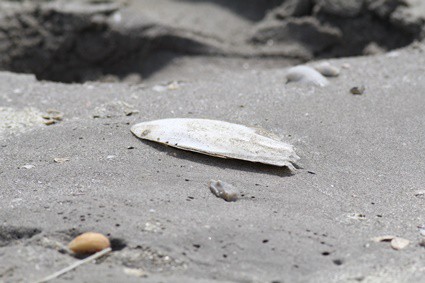
Vitamin D And Cuttlebone
Hermit crabs are omnivores, meaning they can get vitamin D from their diet.
Offer small quantities of red meat (especially liver), oily-scaled fish, and egg yolks. Small servings of breakfast cereal (like bran flakes and Quaker oats) can also provide hermit crabs with vitamin D.
You can also get a UVB light for the hermit crabs’ enclosure, as this will provide vitamin D. Ensure this doesn’t override a hermit crab’s need for the right balance of lightness and darkness.
Where To Get Cuttlebone
If you’re looking for cuttlebone, here are your options:
- Exotic pet stores.
- Butchers and fishmongers.
- Finding cuttlebone on the beach.
When looking at cuttlebone in a pet store, check the packaging carefully.
The product should read as “washed and desalinated.” This means the cuttlebone has been treated and cleaned, removing bacteria that could be harmful to hermit crabs.
It won’t have been cleaned if you buy cuttlebone from a fishmonger or get one from the beach.
Also, it’s impossible to know how long raw cuttlebone has been exposed to seawater. While the cuttlefish is marine-based, the shell is weakened by prolonged exposure to salt water.
How To Give Hermit Crabs Cuttlebone
Hermit crabs can be provided with a whole cuttlebone, or they can be ground into food.
Placing a cuttlebone in the tank whole gives hermit crabs something to interact with, but ground cuttlebone is ideal if they usually ignore or avoid eating it.
Hermit crabs are unlikely to taste ground cuttlebone in their food but will benefit from the extra calcium. You can grind the cuttlebone in a mortar and pestle or crush it with a rolling pin.
If you prefer to provide the cuttlebone whole, place it in the tank while the hermit crabs sleep. The cuttlebone could be laid down or stood upright on the substrate.
The scent of calcium should be enough to tempt feeding, but if not, spread a sweet taste like jam on the cuttlebone to attract the interest of the hermit crab colony.
You could also try attaching cuttlebone chunks to the side of the tank. Hermit crabs love to climb, meaning an elevated cuttlebone will reward them for their efforts.
Do Cuttlebones Expire?
Because cuttlebones are bones, they’re unaffected by humidity in hermit crab tanks, avoiding spoilage and mold growth. Still, the food and poop that lands on cuttlebones can become moldy.
To remove buildup on the cuttlebone, wash it under running water or wipe it with a wet cloth.
Cuttlebones may undergo slight color changes as time passes or become discolored by fruit and vegetable dyes. It’s also possible that chemical usage causes cuttlebone discoloration.
You don’t need to replace a cuttlebone until the hermit crabs have finished eating it.
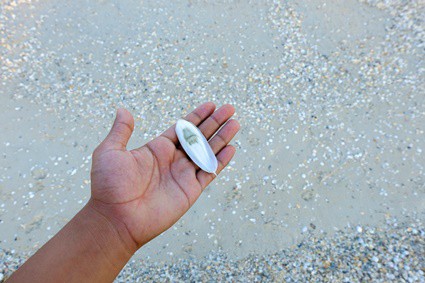
How Much Cuttlebone Do Hermit Crabs Need?
Pet hermit crabs won’t eat more cuttlebone than is necessary, and it’s unlikely that cuttlebone will reduce their appetite and prevent them from getting a balanced diet.
Adding more than one cuttlebone resource in a tank is recommended. According to PloS One, hermit crabs can get competitive and territorial over food.
Alternatives To Cuttlebone
The best cuttlebone alternative is oyster shells. Like cuttlebone, oyster shells can be consumed by hermit crabs gradually or ground up before being added to certain foods.
Health food shops sell calcium carbonate, usually in powdered form. It can be sprinkled onto food, much like a ground cuttlebone. Provide calcium carbonate 2 to 3 times weekly in a dish or bowl.
Calcium blocks are usually smaller but are available in various scents and flavors. As hermit crabs enjoy sweet-tasting and smelling foods, this can make them more enticing.
You can give hermit crabs the calcium they need through their regular food, but cuttlebone is a valuable addition. Some extra calcium means a hermit crab’s exoskeleton will be sufficiently fortified.

